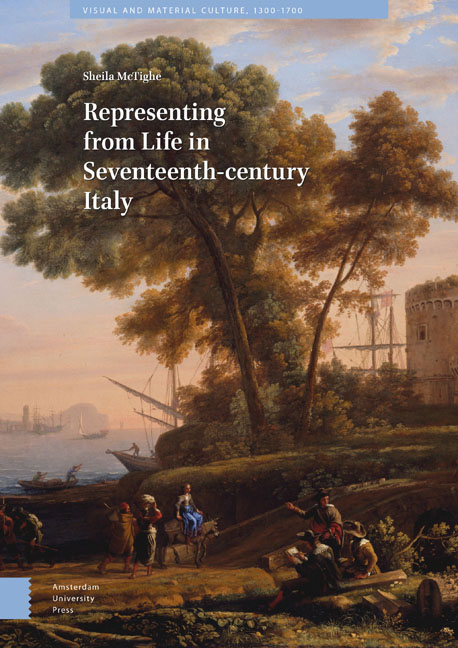Book contents
- Frontmatter
- Acknowledgements
- Contents
- Illustration List
- Introduction: Depicting from Life
- 1 Caravaggio’s Physiognomy
- 2 Jacques Callot, Drawing Dal Vivo around 1620: Commerce in Florence, Piracy on the High Seas
- 3 Jacques Callot’s Capricci di varie figure (1617): The Allusive Imagery of the Everyday, Represented ‘from Life’ and Emulating a Text
- 4 The Motif of the Shooting Man, and Capturing the Urban Scene: Claude Lorrain and the Bamboccianti
- 5 The Absent Eyewitness: the Revolt of Masaniello and Depiction Dal Vivo in the Middle of the Seventeenth Century
- Conclusion
- Index
2 - Jacques Callot, Drawing Dal Vivo around 1620: Commerce in Florence, Piracy on the High Seas
Published online by Cambridge University Press: 21 November 2020
- Frontmatter
- Acknowledgements
- Contents
- Illustration List
- Introduction: Depicting from Life
- 1 Caravaggio’s Physiognomy
- 2 Jacques Callot, Drawing Dal Vivo around 1620: Commerce in Florence, Piracy on the High Seas
- 3 Jacques Callot’s Capricci di varie figure (1617): The Allusive Imagery of the Everyday, Represented ‘from Life’ and Emulating a Text
- 4 The Motif of the Shooting Man, and Capturing the Urban Scene: Claude Lorrain and the Bamboccianti
- 5 The Absent Eyewitness: the Revolt of Masaniello and Depiction Dal Vivo in the Middle of the Seventeenth Century
- Conclusion
- Index
Summary
Abstract
In Florence during the early years of the Seicento, the Medici court prized Flemish art and the practice of drawing from life. Jacques Callot, the young printmaker from Lorraine, and his friend Filippo Napoletano from Naples, were encouraged to represent court festivities and local topographies in direct confrontation with their models outside in the streets of the city. They entered into friendly competition with each other and with other court artists, to produce artistry that would amuse the ailing Grand Duke Cosimo II. Their eye-witnessing was also put to the service of publicising political successes, such as Tuscany's victories over the Barbary pirates ravaging Mediterranean coasts and the Grand Duchy's regulation of urban commerce.
Keywords: market scenes, Michelangelo Buonarrotti the Younger, espionage in art, Ottoman Turks in Florence, drawing albums, Giulio Parigi
The etchings of Jacques Callot (1591–1635) won him fame across seventeenth-century Europe, far beyond the boundaries of his native duchy of Lorraine, a state now absorbed into eastern France. He was, with Rembrandt, among the most famous printmakers of the century, whose impact was enormous on subsequent prints but also on every aspect of the visual arts. His career spanned cultures and countries. Callot grew up within Lorraine's heterogeneous court society of French, Flemish and German speakers. His father held the position of herald at court in Nancy and was also a painter of heraldry for the court and the city. In Callot's childhood a number of artists and skilled craftsmen socialized with his father. However, just as Claude Lorrain was to do a decade later, Callot left his native Nancy to travel southward to Italy for his artistic education. In Rome he learned to engrave in the workshop of a Frenchman, Philippe Thomassin. His Florentine biographer Filippo Baldinucci tells us that Callot was then drawn to the Medici court by the fame of the architect and engineer Giulio Parigi's teachings at his scuola on the via Maggio. Moving to Florence where he remained from 1612 to 1621, and working for the Grand Duke Cosimo II de’ Medici from 1614, he made etchings for the most brilliant court in Europe at the time.
- Type
- Chapter
- Information
- Representing from Life in Seventeenth-century Italy , pp. 91 - 144Publisher: Amsterdam University PressPrint publication year: 2020



